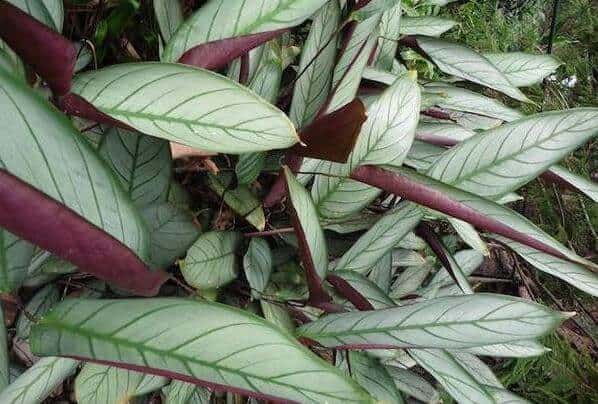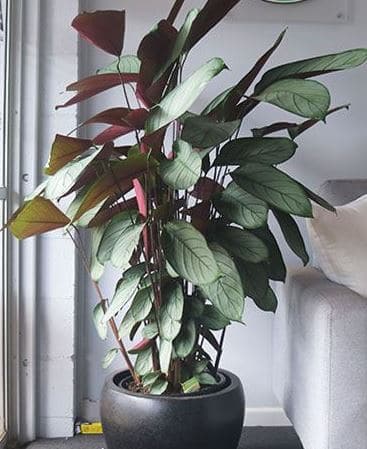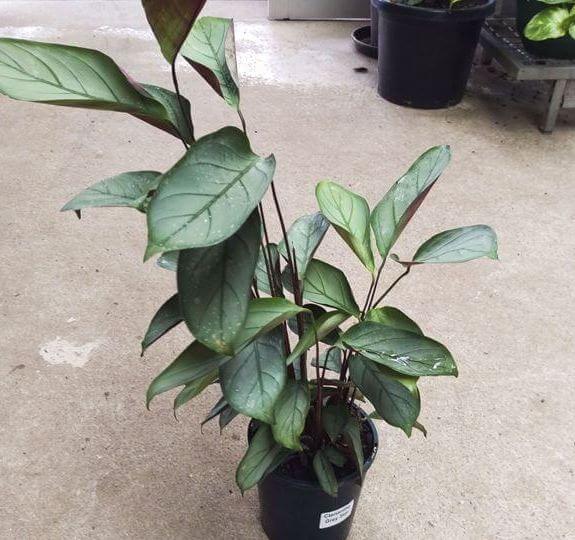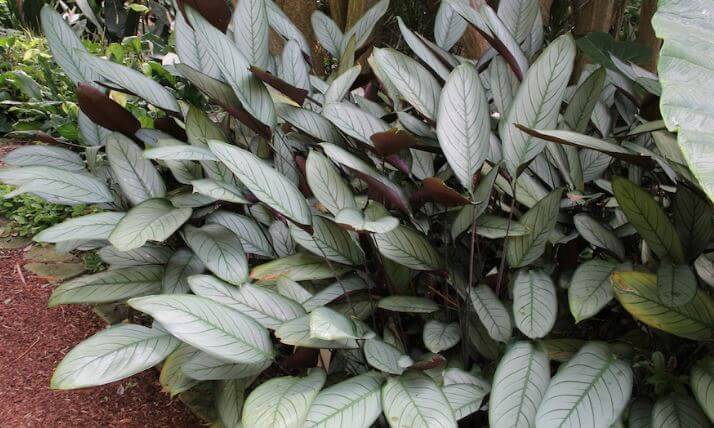Last Updated on January 6, 2023 by a Friendly Gardener
Having a plant around has many benefits—fresher air, a better mood, and a more aesthetically appealing interior. Of the many plants that you can add to your space, the eye-catching grey star stands among the most popular.
This lovely plant, with its dramatic coloration and striking form, is especially prized for its gorgeous leaves that curl up every evening and unfurl the next morning in the presence of the sun.
If you’re considering bringing home a grey star plant, here’s everything you need to know about the plant and caring for it.
About the Grey Star Plant

The grey star plant belongs to the Ctenanthe genus and is scientifically known as Ctenanthe setosa. This flowering genus, in turn, belongs to the Marantaceae family, a family of evergreen perennials that are indigenous to the tropics of South and Central America.
The grey star is also known as the prayer plant (for its curling-unfurling leaf behavior mentioned earlier), the grey star prayer plant, the never never plant, and the Calathea grey star (it’s unclear whether the two are indeed different plants, as any difference is highly minute).
Grey stars make great houseplants, thriving in indoor spaces and partially shaded outdoor spaces. The plant grows in clump-like structures, with elongated, thick leaves that feature grey/silver and dark green stripes.
The underside of the leaves is especially spectacular, painted naturally in deep maroon or purple. Mature grey star plants can grow up to a height of three feet.
Though these plants are flowering plants, blooms are quite rare—the spotlight is always on the majestic foliage! On the rare occasions that they do flower in indoor grey stars, the blooms are white.
Though you’ll mostly find grey stars as indoor plants, these plants can thrive in USDA hardiness zones 10 and 11, with a growing season between late spring and early summer (though growth is slower outdoors than indoors).
Another factor that adds to the popularity of these plants is that they’re not poisonous to cats and dogs, though ingesting the leaves should still be avoided as far as possible.
Grey Star Plant Care

Grey star plant care is quite straightforward. The below tips will help you keep your grey star happy.
Light Requirements
As is the case with any variegated plant, excess direct sunlight can be problematic, causing the beautiful coloration to fade. Therefore, if you’re growing the plant outdoors, do so in a partially shaded spot that receives ample indirect sunlight.
A good way to tell if your plant is receiving sufficient sunlight is to observe its colors over time. If the light received is insufficient, you’ll notice the leaves growing greener and leggy growth setting in.
For an indoor grey star, a window, with drapes that can filter the sunlight streaming in is a great spot.
In case you don’t have sufficient light indoors, you can always supplement the existing light with grow lights.
Soil Requirements
Grey star plants require soil that combines efficient aeration, drainage, and moisture retention. Aeration is necessary for the roots to receive enough air and nutrients for proper growth, whereas good drainage is necessary to prevent waterlogging and root rot. Moisture retention is essential since these plants require moist soil at all times.
Nutrient-rich, well-draining potting soil that satisfies all of these conditions can be bought and used, or you could even make your own. If you’d rather stick with store-bought potting mixes, ensure that the drainage is good enough; in case it isn’t, you can add perlite to the mix to enhance the soil’s draining capabilities.
Grey star plants require soil that ranges in pH from 6.1 (slightly acidic) to 7.3 (neutral).
Humidity and Temperature Requirements
Grey star plants need temperatures and humidity levels similar to their native environment, which means a minimum temperature of 55℉ and an ideal range between 60℉ and 80℉.
These tropical plants enjoy high levels of humidity, as much as 75% and above. If you can’t provide such levels of humidity indoors, regularly misting the leaves will help supplement the existing humidity, as will a humidifier or a pebble tray.
If you’re someone who enjoys constant high heating or air conditioning indoors, a grey star plant may not be for you, as these plants cannot tolerate drastic temperature changes, dry air, and drafts.
They also perish when faced with frost.
Water Requirements

For healthy foliage to grow and develop, it’s essential that you water the plant right. As mentioned earlier, grey stars enjoy moist soil, whether you’re growing them indoors or outdoors.
During the growing season in spring and summer, make sure the soil is always moist and not soaked or waterlogged, as this can quickly lead to fungal infections and root rot. Water twice a week, or better yet, check if the top two inches of the soil are dry before you water the plant again.
When watering, make sure that you’re watering slowly and stop as soon as you see water draining from the pot. If excess water has accumulated in the pot tray, remove it so that it doesn’t reach the roots.
During the winter months, when the plant is dormant, reduce the frequency of watering. When you do water, ensure that the water used is at room temperature and not excessively cold, to prevent damage to the roots.
If you’re worried about fluoride or chloride poisoning, you can use distilled water or even rainwater, as many plant parents do, for your grey star.
Fertilizer Requirements
For the foliage to flourish, regularly feeding your grey star with diluted liquid fertilizer, in the growing months, is recommended. Stop fertilizing during the fall and winter months, when growth is slowed or stopped.
Pruning and Propagating
Pruning is only required to remove dying or damaged leaves; the former most commonly occurs at the stem’s base.
Grey stars can be propagated from offsets and stem cuttings; seeds have a very low success rate.
Repotting

Grey star plants benefit from being repotted every few years. Ensure that the pot has enough drainage holes to prevent waterlogging.
Pests and Problems
Mealybugs and spider mites are the only pests you need to bother about with grey stars, and occasionally, whiteflies, thrips, and scale insects. However, root and leaf diseases are common in these plants, mostly stemming from soggy soil.
Loss of foliage and drooping and/or yellowing leaves can be signs of disease, overwatering, and incorrect lighting conditions.
The Final Word
This tropical plant can add some much-needed color and joy to your desk, with its stunning foliage and dancing leaves. Buying one won’t take you too much time, but make sure you invest adequate effort, time, and care into raising your gorgeous plant!


